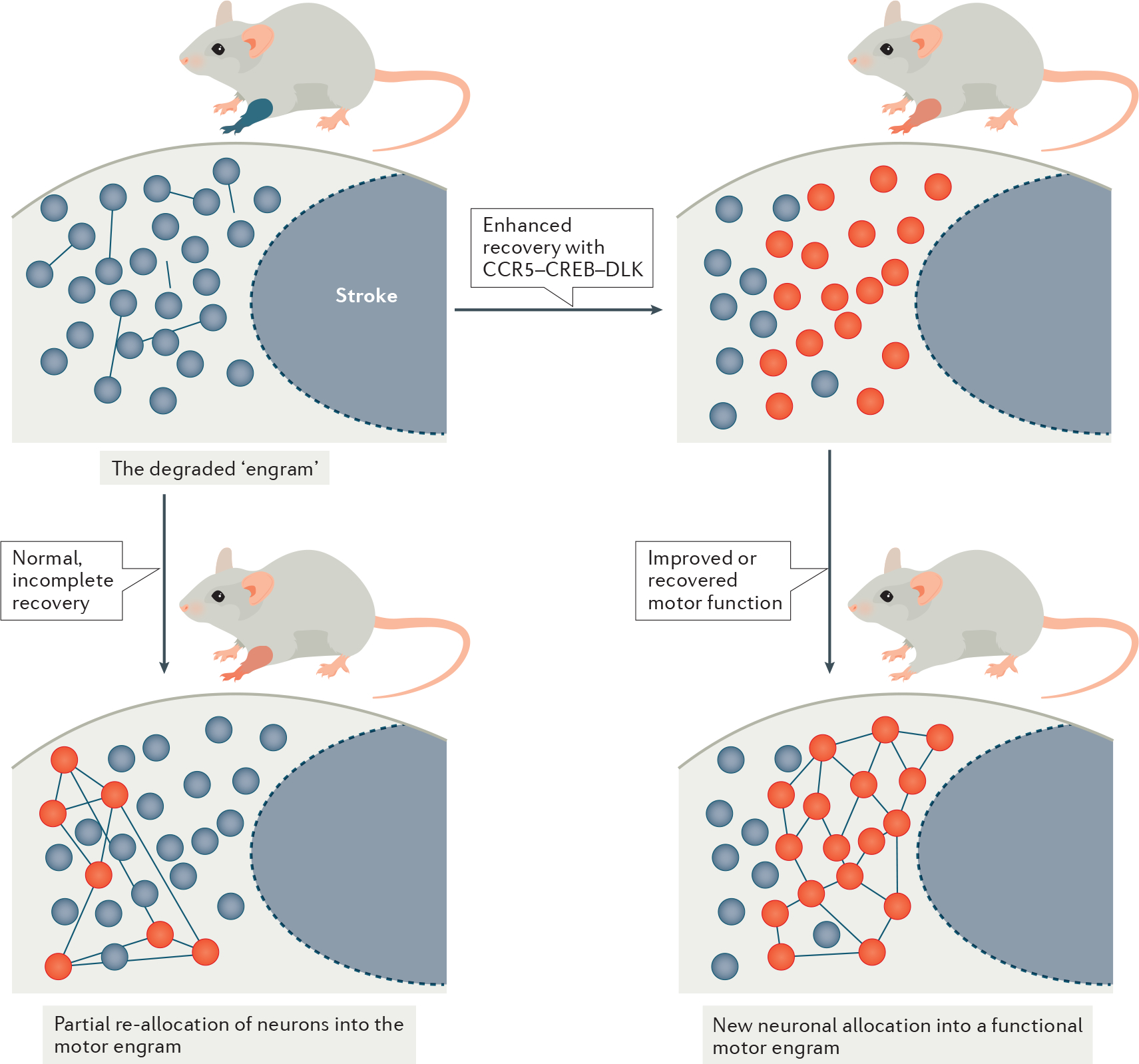Fig. 4 |. Recovery engram in stroke.

A conceptual model of the engram in stroke recovery. Top left panel: stroke induces a loss of neural connectivity, disrupting the engram that encodes a motor behaviour and, hence, causing a motor impairment. Note that the level of functional impairment is depicted by the colour of the mouse forelimb, ranging from blue (no function) to shades of red (partial recovery) and grey (normal movement). Bottom left panel: endogenous plasticity during the critical period provides a new neural substrate where lost function is partially allocated to a sub-set of neurons (red circles) in a motor circuit. Inefficient allocation leads to spontaneous partial recovery or compensation of motor function. Right panels: increasing the excitability threshold of neurons in peri-infarct by increasing cAMP-binding response element (CREB) expression captures excitable and efficient neurons to allocate into a functional motor circuit for complete motor recovery. CREB–C-C chemokine receptor 5 (CCR5)–dual-leucine zipper kinase (DLK) signalling, which can mediate allocation, may be a target in developing drugs for stroke recovery.
